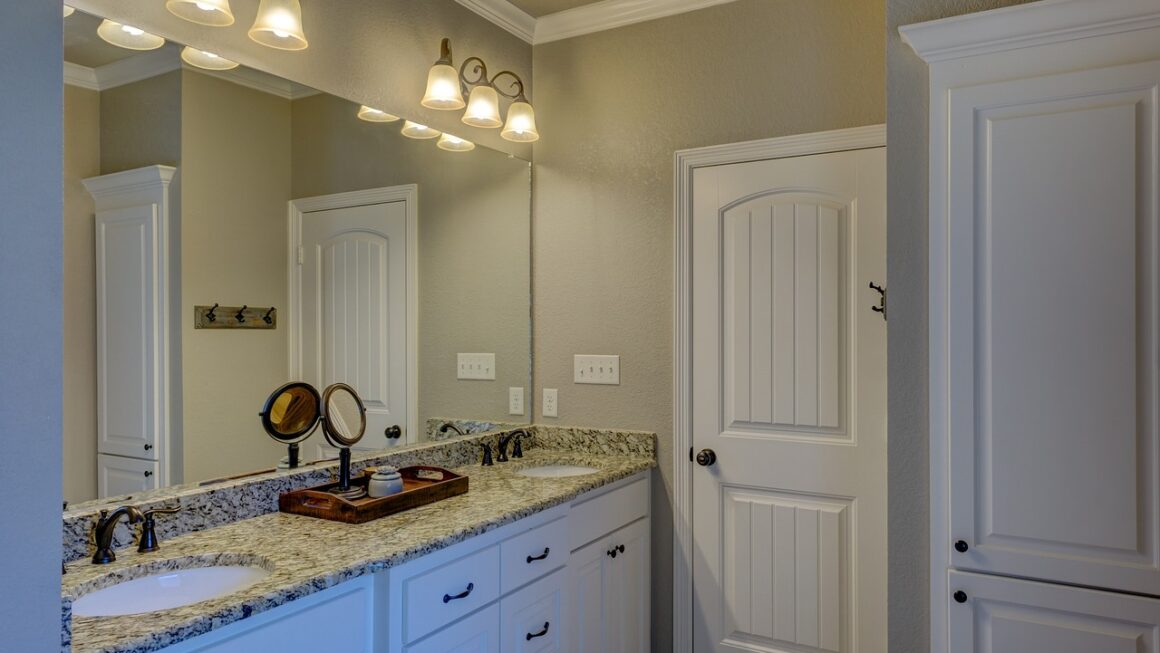Smart sensors are revolutionizing the way we interact with our world, providing data-driven insights that optimize efficiency, enhance safety, and improve overall quality of life. From monitoring environmental conditions to enabling predictive maintenance in industrial settings, these tiny but powerful devices are transforming industries and shaping the future. This comprehensive guide explores the capabilities, applications, and benefits of smart sensors, providing a deep dive into this essential technology.
What are Smart Sensors?
Defining Smart Sensors
A smart sensor is more than just a device that detects a physical quantity, like temperature or pressure. It integrates a sensor, a microcontroller, and communication capabilities into a single package. This integration allows the sensor to:
- Process data locally
- Make decisions based on pre-programmed logic
- Communicate wirelessly with other devices or a central control system
The onboard processing power differentiates smart sensors from traditional sensors, which simply transmit raw data. Smart sensors can filter noise, perform calibration, and even execute algorithms, reducing the burden on central processing units and improving system responsiveness.
Key Components of a Smart Sensor
Smart sensors typically comprise the following essential components:
- Sensing Element: This is the actual sensor that detects the physical parameter, such as temperature, pressure, light, or motion. Examples include thermistors, pressure transducers, and accelerometers.
- Signal Conditioning: This circuitry amplifies, filters, and converts the analog signal from the sensing element into a digital signal that the microcontroller can process.
- Microcontroller: The “brain” of the smart sensor, responsible for processing data, running algorithms, and controlling communication.
- Communication Interface: This allows the sensor to communicate with other devices or a network. Common interfaces include Bluetooth, Wi-Fi, Zigbee, and wired connections like Ethernet.
- Power Supply: Smart sensors require a power source, which can be a battery, a wired connection, or even energy harvested from the environment (e.g., solar power).
The Evolution from Traditional Sensors
Traditional sensors provide raw data that needs to be processed by an external system. Smart sensors offer several advantages over their traditional counterparts:
- Improved Accuracy: Onboard processing allows for real-time calibration and noise reduction.
- Reduced Latency: Data processing occurs locally, minimizing delays in decision-making.
- Lower Power Consumption: Processing data locally reduces the amount of data transmitted, saving power.
- Enhanced Reliability: The integrated design is often more robust and less susceptible to environmental interference.
- Simplified System Design: Smart sensors reduce the complexity of the overall system by handling data processing and communication internally.
Applications of Smart Sensors Across Industries
Industrial Automation and Manufacturing
Smart sensors are critical for optimizing manufacturing processes, enhancing efficiency, and improving product quality. For example:
- Predictive Maintenance: Smart vibration sensors on machinery can detect anomalies and predict potential failures before they occur, reducing downtime and maintenance costs. According to a report by McKinsey, predictive maintenance can reduce maintenance costs by up to 40%.
- Process Monitoring: Temperature and pressure sensors can monitor critical parameters in chemical reactors or manufacturing lines, ensuring consistent product quality and preventing accidents.
- Robotics and Automation: Smart sensors, such as proximity sensors and vision sensors, enable robots to navigate and interact with their environment safely and efficiently.
- Asset Tracking: Smart tags can track the location and condition of assets throughout the supply chain, improving visibility and preventing loss or damage.
Healthcare and Wellness
Smart sensors are transforming healthcare by enabling remote patient monitoring, personalized medicine, and improved diagnostics. Consider these examples:
- Wearable Health Monitors: Smartwatches and fitness trackers equipped with heart rate sensors, accelerometers, and blood oxygen sensors can monitor vital signs and activity levels, providing valuable insights into a person’s health.
- Remote Patient Monitoring: Smart sensors can monitor patients with chronic conditions, such as diabetes or heart failure, from the comfort of their own homes, reducing hospital readmissions and improving patient outcomes.
- Smart Pills: Ingestible sensors can monitor medication adherence and physiological parameters within the digestive tract, providing real-time data to healthcare providers.
Environmental Monitoring and Agriculture
Smart sensors play a crucial role in protecting the environment and optimizing agricultural practices. Examples include:
- Air and Water Quality Monitoring: Smart sensors can monitor pollutants and contaminants in the air and water, providing early warnings of environmental hazards.
- Precision Agriculture: Smart sensors can monitor soil moisture, temperature, and nutrient levels, allowing farmers to optimize irrigation and fertilization, maximizing crop yields and minimizing waste.
- Weather Monitoring: Smart weather stations can provide real-time data on temperature, humidity, wind speed, and rainfall, enabling more accurate weather forecasting and improved disaster preparedness.
Smart Homes and Buildings
Smart sensors enhance comfort, convenience, and energy efficiency in homes and buildings. Consider these applications:
- Smart Thermostats: Learn your heating and cooling preferences and automatically adjust the temperature to optimize comfort and energy savings.
- Smart Lighting: Automatically adjust the brightness of lights based on occupancy and ambient light levels, reducing energy consumption.
- Security Systems: Detect unauthorized entry, smoke, or water leaks, providing alerts to homeowners and emergency services.
- Air Quality Monitoring: Monitor indoor air quality and alert homeowners to potential pollutants, such as carbon monoxide or volatile organic compounds (VOCs).
Benefits of Implementing Smart Sensors
Increased Efficiency and Productivity
Smart sensors enable businesses to optimize processes, reduce waste, and improve overall efficiency. For example, in manufacturing, predictive maintenance powered by smart sensors can significantly reduce downtime, leading to increased production output. In agriculture, smart irrigation systems can conserve water and increase crop yields.
Improved Safety and Security
Smart sensors can detect potential hazards and alert users to take corrective action, enhancing safety and security in various environments. Examples include:
- Industrial Safety: Detecting gas leaks, overheating equipment, or hazardous conditions.
- Home Security: Detecting intruders, smoke, or water leaks.
- Environmental Monitoring: Detecting pollutants or contaminants in the air and water.
Cost Savings
While the initial investment in smart sensors may seem significant, the long-term cost savings can be substantial. These savings stem from:
- Reduced Maintenance Costs: Predictive maintenance minimizes unplanned downtime and extends the lifespan of equipment.
- Lower Energy Consumption: Smart thermostats and lighting systems optimize energy usage, reducing utility bills.
- Improved Resource Management: Precision agriculture conserves water and fertilizer, reducing input costs.
Enhanced Decision-Making
Smart sensors provide real-time data and insights that enable informed decision-making. For example, businesses can use data from smart sensors to optimize inventory management, improve customer service, and develop new products and services. Healthcare providers can use data from remote patient monitoring systems to personalize treatment plans and improve patient outcomes.
Environmental Sustainability
By optimizing resource usage and reducing waste, smart sensors contribute to environmental sustainability. Precision agriculture reduces the use of water and fertilizers, minimizing environmental impact. Smart energy management systems reduce energy consumption, lowering greenhouse gas emissions. Environmental monitoring systems provide early warnings of pollution, enabling timely interventions.
Choosing the Right Smart Sensor for Your Application
Understanding Your Specific Needs
The first step in choosing a smart sensor is to clearly define your specific needs and requirements. Consider the following factors:
- What physical parameter do you need to measure? (e.g., temperature, pressure, humidity, motion)
- What is the required accuracy and resolution?
- What is the operating environment? (e.g., temperature range, humidity levels, exposure to chemicals)
- What is the communication protocol? (e.g., Bluetooth, Wi-Fi, Zigbee, Ethernet)
- What is the power source? (e.g., battery, wired connection, energy harvesting)
- What is your budget?
Evaluating Sensor Specifications
Once you have a clear understanding of your needs, you can begin evaluating sensor specifications. Pay attention to the following parameters:
- Accuracy: The degree to which the sensor’s measurement matches the true value.
- Resolution: The smallest change in the measured parameter that the sensor can detect.
- Range: The maximum and minimum values of the measured parameter that the sensor can measure.
- Response Time: The time it takes for the sensor to respond to a change in the measured parameter.
- Operating Temperature: The temperature range within which the sensor can operate reliably.
- Power Consumption: The amount of power the sensor consumes.
- Communication Protocol: The type of communication interface used by the sensor.
Considering Integration and Compatibility
Ensure that the smart sensor you choose is compatible with your existing systems and infrastructure. Consider the following factors:
- Communication Compatibility: The sensor should use a communication protocol that is compatible with your existing network and devices.
- Data Format: The sensor should provide data in a format that is compatible with your data processing and analysis tools.
- Integration Effort: Consider the effort required to integrate the sensor into your existing system. Some sensors may require custom software or hardware modifications.
Testing and Validation
Before deploying smart sensors on a large scale, it is important to test and validate their performance in a real-world environment. This will help you identify any potential issues and ensure that the sensors meet your requirements. Consider the following:
- Laboratory Testing: Test the sensors under controlled conditions to verify their accuracy and reliability.
- Field Testing: Deploy the sensors in a real-world environment and monitor their performance over time.
- Data Analysis: Analyze the data collected by the sensors to identify any anomalies or inconsistencies.
Conclusion
Smart sensors are transforming industries by providing data-driven insights that optimize efficiency, enhance safety, and improve overall quality of life. From industrial automation and healthcare to environmental monitoring and smart homes, these versatile devices are enabling a wide range of applications. By understanding the capabilities, benefits, and considerations involved in choosing and implementing smart sensors, you can harness their power to create a more efficient, sustainable, and connected future. Embracing this technology is no longer a luxury, but a necessity for organizations seeking to stay competitive and thrive in the modern digital landscape.




